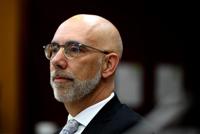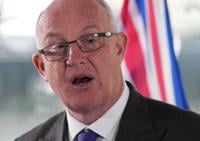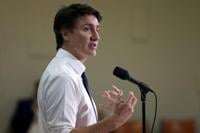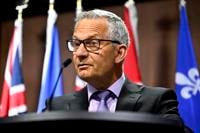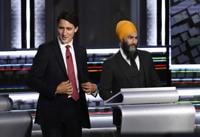OTTAWA - The parliamentary budget officer says higher interest rates will lead the economy to stagnate in the second half of the year, with a new report suggesting the federal deficit will rise significantly this fiscal year.
The PBO released its economic and fiscal outlook Friday, providing updated projections for the economy and federal finances as high interest rates weigh on growth.
The budget officer also says it expects consumer spending to remain weak in the second half of 2023 and throughout the first half of 2024.
Faced with slower growth in government revenues and higher expenses, the federal deficit is projected to rise to $46.5 billion in 2023-24, up from an estimated $38.7 billion for 2022-23.
Assuming no new measures and temporary measures expire, the deficit is expected to track downward, falling to $8.2 billion in 2028-29.
The PBO also projects the debt-to-GDP ratio to jump this fiscal year to 42.6 per cent.
That ratio is expected to fall to 37.8 per cent in 2028-29 — assuming no new measures — which is above its pre-pandemic level of 31.2 per cent of GDP in 2019-20.
Higher interest rates are raising the cost of debt for the federal government. The PBO says it expects the debt servicing ratio, which refers to public debt charges relative to tax revenues, will peak at 12.0 per cent this fiscal year before gradually falling back to 11.0 per cent in 2028-29.
As the Bank of Canada gears up for a rate decision this month, the PBO's projection assumes no further rate hikes. Instead, it projects the central bank will hold its key interest rate at five per cent and begin cutting rates in April 2024.
Its inflation forecast anticipates a return to two per cent inflation by the end of next year.
The Bank of Canada is set to make its next interest rate decision on Oct. 25. During a virtual roundtable with reporters on Friday, governor Tiff Macklem said he expects the governing council will debate whether it should exert patience or raise rates further.
The economy has softened this year, shrinking in the second quarter as consumer spending slows. The labour market is no longer as hot as it was last year: job vacancies have fallen and the unemployment rate has inched higher.
While this downward momentum is expected to continue, inflation has proven to be sticky.
Canada's inflation rate fell to 2.8 per cent in June but climbed back up to 4.0 per cent in August as underlying price pressures remain high.
This report by Ďă¸ŰÁůşĎ˛ĘąŇĹĆ×ĘÁĎ was first published Oct. 13, 2023.


